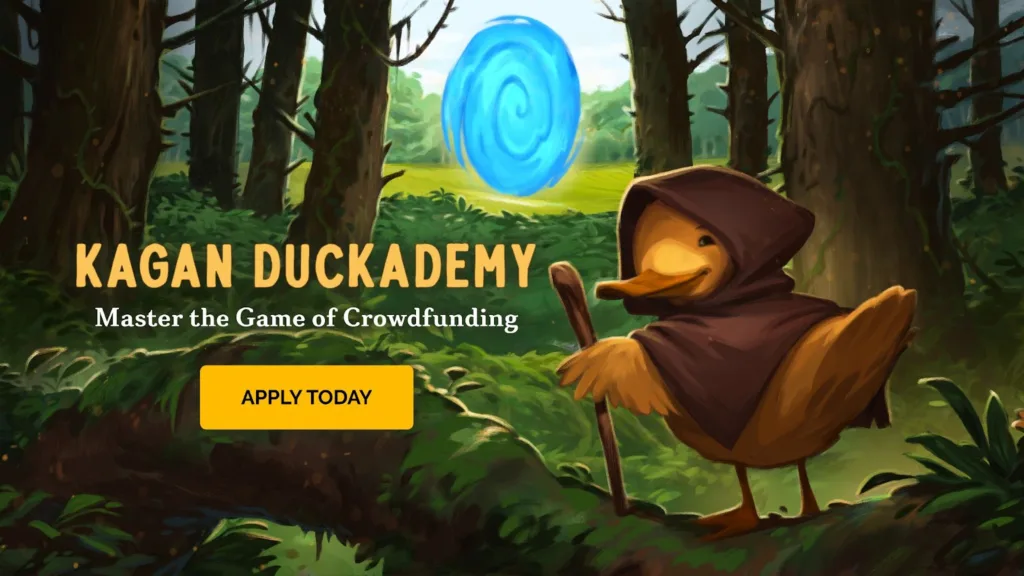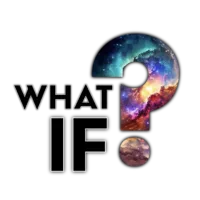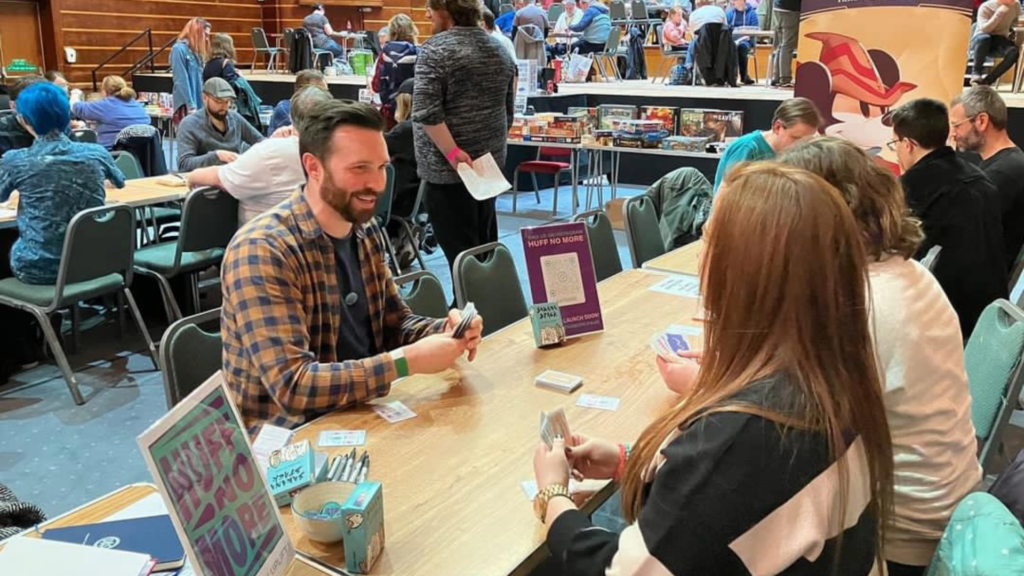Welcome to another edition of the What If? Blog! This week I’m absolutely thrilled to have Ori Kagan joining us. He’s the mastermind behind Kagan Productions and the creative force who’s been crafting those stunning board game trailers you’ve been watching on Kickstarter for the past seven years. From working with dream IPs like Skyrim and Star Wars to helping first-time designers bring their passion projects to life, Ori has become one of the most respected voices in tabletop crowdfunding. But what really sets him apart isn’t just his filmmaking background; it’s his unique approach to marketing that’s been quietly revolutionising how board games get funded.
In our conversation today, we’re diving deep into Ori’s storytelling framework that transforms struggling campaigns into funding successes. We’ll explore why so many brilliant games fail on crowdfunding platforms despite being perfectly designed, uncover the telltale signs of a campaign that’s destined to struggle, and discover those special touches that make certain projects absolutely shine. Whether you’re a designer preparing for your first launch or someone who’s fascinated by the mechanics of crowdfunding, Ori’s insights into the Hero’s Journey will give you a completely new perspective on what it really takes to turn backers into believers. Enjoy.
Joe: Hiya Ori, welcome to the What If? Blog. It’s great to have you with us this week. Can you start us off by telling us what brings you to the world of board game design?
Ori: Thanks for having me here Joe! Honestly I still pinch myself from time to time to believe that this is what I do for a living…

I’m the guy that makes the board game trailers and I also help with marketing strategy for the crowdfunding campaigns. I’ve been doing this for 7 years now and I had the honour of working on some dream IPs like Skyrim, D&D to even more recently Star Wars… But honestly nothing beats helping new designers bring their first game to life.
I also do a bit of game design myself… but that’s just a fun thing on the side. For now.
Joe: “for now” – that’s the kind of sentence I like!
What got you into trailers and marketing? Lots of people sidestep or move in from different areas – is this what you’ve always done?
Ori: I’ve always loved making movies and telling stories. As a kid I dabbled in special effects trying to create lightsaber effects with my friends – and remember this is before YouTube tutorials! Running D&D campaigns and playing board games was always a part of my geeky life, but I never thought about it as a career.

I studied film in Tel-Aviv Uni with plans of working in the film industry… but very quickly I realised that place is a MEAT GRINDER. Toxic work environments and very lucky few can “make it” in the industry.
Nope. I wasn’t going to spend my life climbing some corporate ladder and hoping there’s something at the end.
So I pivoted to being a freelance editor and animator. This gave me a lot more freedom and pretty decent clients in the institutions’ explainer videos field. It paid well, but honestly… was very boring. I wanted to do something that would be FUN and creative, like the movies I dreamt of doing as a kid.
Around that time I discovered the Kickstarter scene for board games and even backed a few, and suddenly the idea clicked – Kickstarters always need a cool video → I could create those videos! Through Facebook I found my first client, which led to another and then another… and soon word of mouth started spreading and before I knew it… Covid hit.
The funny thing is… compared to a lot of my friends who had nothing to do, I suddenly had a huge surge of work from both my regular freelancing job (they all wanted Covid safety videos and such) and board game videos (the pandemic drove a lot of companies to push board game campaigns forward to meet the demand of people stuck at home). It was so much work I couldn’t possibly do it all myself.
I still remember that day, I scrolled through my phone and “fired” all my non-board games related clients!

That’s when I fully committed to building Kagan Productions, establishing a brand and building a team to fully embrace the tabletop industry as my sole niche source of income – and I haven’t looked back since.
Joe: Amazing. And the board game scene is better for it! You mentioned Kickstarter, so let’s focus on that for a moment. You must see so many Kickstarters come and go, many that I assume you support through Kagan productions. What do you think is special or important about crowdfunding?
Ori: You are too kind ☺️
One of the cool things about crowdfunding is that it’s essentially the least risky way to start a business – more and more people are realising this.
You essentially get an exact picture of the demand, and raise your capital BEFORE you manufacture your product.
Thanks to that so many indie board games are now finding life through crowdfunding and together with an industry that embraces it. We are getting some truly wonderful and innovative games that wouldn’t exist without it – board game design and self-publishing has never been more accessible.
The problem comes when new creators realise that launching a campaign with a great game isn’t enough. I’ve seen many publishers work for years on the great game, pouring blood, sweat and tears into it and perfecting it – only to launch and flop. It also happened to some of my clients – and it really frustrated me.
I made it my mission to discover what makes a campaign succeed or fail. I studied brand strategy, took online courses about marketing, sales and came to the realisation that the problem was simple – board game creators are just like me – passionate, sometimes introverted and almost always are shy about marketing their games. I worked on building a framework that offers a solution using my favourite tool – storytelling.
Board game creators are just like me – passionate, sometimes introverted and almost always are shy about marketing their games.
Board game designers already have creative skills, they just used them to create a wonderful board game. My goal was to help them use those same skills for marketing – making marketing fun and easy with a clear framework.
Joe: I listened to your interview on Storytelling with the Crowdfunding Nerds, and so much of what you said made sense. For anyone reading, it’s well worth listening to.
Could we delve a little more into your storytelling framework? How are stories at the heart of a campaign?
Ori: Being with a filmmaking background I’ve always been influenced by The Hero’s Journey – the “formula” that is the basis of almost all Hollywood movies classic and new, compiled by Joseph Campbell, Christopher Vogler and others in various formats that are slightly different, but are similar at the core.

The main concept is always the same – a relatable hero sets off on a life changing adventure, faces danger and challenges, confronts his worst nightmare and undergoes a transformation, and finally returns as a new person – his true self.
The moment of transformation is the core of the story, it’s what moves us emotionally and resonates with us on a basic human level. It’s the reason that story needed to be told.
How does this apply to marketing?
We can use the power of storytelling to capture our audience’s attention, keep them engaged as they start to learn about your game and finally are left with a promise – a promise of a transformative experience they can receive by buying it.
Practically I break the framework into three steps –
- Map out all your favourite things about your game – your selling points.
- Create your Superfan persona – the ideal person this game was made for and who has the least amount of resistance to buy it
- Revisit your selling points and structure them from most exciting to least exciting- for the specific Superfan.
Out of this a story will emerge, and that’s the story you need to tell over and over again in all of your marketing initiatives. Every client I worked with that did this process had a successful launch.
It might sound simple, but it’s not easy to do. I’d recommend doing this exercise with another person to throw ideas against one another and to challenge each other.
Joe: This is great Ori, thanks for the outline. I suggest if anyone wants to hear a bit more detail the podcast episode from crowdfunding nerds would be the place to hear that.
I’d like to move us to Kickstarter campaigns, I’ve been an avid watcher of campaigns since I started supporting the @boardgameprotohype community. You start to spot patterns in what is succeeding and what isn’t.
I wonder if we could explore those two points. Firstly how easy is it to spot a campaign that is going to struggle, what should those projects look out for?
Ori: Great question. In my experience it is pretty rare to see a campaign that looks like it’s going to succeed and completely fails.
There are some very clear signs that point to red flags that the campaign isn’t ready to launch – they are easily distinguished and quantifiable.
The main one most people probably know about is the size of your email list – how many followers have willingly given you their details so you can contact them once you launch. What a lot of people don’t talk about is it’s not all about quantity but also quality. Getting emails is easy, but getting Superfan emails is more nuanced.
If you want to get a sense of exactly HOW BIG your email list needs to be, I actually created a simple calculator that does exactly that: Crowdfunding De-risk Calculator
The second thing is the campaign page itself. Does it look professional? Does it tell the game’s story in an engaging and clear way? Is the video well made? All of these are elements that either draw the potential backers in or make them click away. People click away if they are confused or feel like someone is wasting their time, and this is something that a lot of campaigns get wrong.
This “vibe check” happens VERY FAST – that’s why the storytelling framework is built to turn a campaign page into a seamless journey so that the backer doesn’t even think I’m clicking away because they’re so drawn into it.
Another important factor that can break campaigns apart is not having strategic pricing. This can happen both ways – either the price is too high or too low. The moment a potential backer sees and understands the scope of a game (usually by seeing the spread of components and size of the box) they immediately create the “perceived value” in their minds. “I’ll pay $XX for that!”.
This ‘vibe check’ happens VERY FAST – that’s why the storytelling framework is built to turn a campaign page into a seamless journey.
When they see the actual price, if it’s higher than the perceived value they will feel cheated. “I’m not paying that much for it!”. They’ve seen similar campaigns priced differently and this price just doesn’t align. They’d still love to buy the game, but it would take a lot to convince them and they will feel resentful about paying more than they think your game is worth, or might pass on it altogether.
But what about the other case, that the game is priced too low? That is, contrary to what many might assume, it’s also a factor that will make backers hesitant to pledge. Think about it – suppose we see a smartphone for sale that’s £1000 or £2000 cheaper than its competitors? We automatically become suspicious. You would search to see what’s the catch – we might pass on buying it for gut feeling alone.
So to summarise if you see a campaign struggling, it’s usually one of these three reasons:
- Not enough pre-launch marketing and gathering enough qualified, Superfans emails
- A messy, unprofessional looking or convoluted campaign page
- A mismatch between perceived value and actual price.
Joe: So that’s what to watch out for. What about those little bits that you think really make a Kickstarter stand out? We can assume that “don’t fall into the traps above” is probably a useful steer, but is there anything else that really makes projects shine?
Ori: I honestly believe every game has its “shine”. Simply for the fact that the creator has been working for so long on perfecting this game and hasn’t given up yet. There’s always something in it that is driving them forwards, it’s just a matter of finding what that element is and making sure that’s the focus of your message.
I honestly believe every game has its ‘shine’. Simply for the fact that the creator has been working for so long on perfecting this game and hasn’t given up yet.
Compared to other products and other industries a tabletop game will be playtested as the “full experience”, and therefore will always receive live feedback along the way.
Each playtest is a marketing opportunity – not only for gathering feedback on the game itself, but learning about your potential backers and superfans.
Campaigns that “shine” clearly have in-depth knowledge of their Superfans. They are speaking in their language, they know what excites them and they’ve already solved challenges that the Superfan might be concerned about before they ask.
Remember – the only real obstacle to get a Superfan to back is to make them realise that your game is for them. The sooner they understand it the easier it is for them to get so excited they will be slamming the “Back this Project” button.
I recommend watching YouTube channels where the content creators analyse campaign pages – you get a sense of how your backers might experience the page as they’re scrolling through it. (For example Room and Board, BoardgameCo, and Bower’s Game Corner.)
Joe: Final question, you’re world and business is supporting table top creators. Can you tell us a little about what you offer, and how designers can get in touch about your services?
Ori: You can get in touch to us about marketing strategy and video production on our website www.kaganproductions.com under the “get a quote” tab.
Additionally, I’m excited to announce that we’re running another cohort program called Kagan Duckademy. We’ll take a small group of tabletop creators to guide them from their first steps into marketing their product to ultimately launch and overfund their campaign – our goal is for every creator to fund with six figures and beyond!
This is the second time we’ve run it and so far we’ve had very exciting successes (Fú: Festive Fortunes with over 1,000 backers) and the rest are gearing to launch very soon with amazing projects we are confident will succeed.
We’re gonna have very limited spots (no more than 10) so you can sign up to the waiting list here.

Finally, if you’re just looking for a simple tool to assess how ready you are to launch and that will include everything that we’ve talked about, I created a short scorecard to measure your campaigns readiness – the Kickstarter Health Check.
It takes 4 min and you just need to answer a few questions about various aspects of your campaign to ultimately get a clear score of how ready you are. Not only that, you will receive a detailed report about what you need to do to improve that score with a bunch of resources which will be relevant to you based on your current score.
Hope all of these help! I can’t wait to see more of these games out in the world!
Thanks so much for having me here, Joe!
What a fantastic conversation! A huge thank you to Ori Kagan for sharing his insights and being so generous with his time. It’s clear why he’s become such a trusted name in the tabletop community – his passion for helping creators succeed really shines through in everything he does. From his early days creating lightsaber effects as a kid to building Kagan Productions into the powerhouse it is today, Ori’s journey perfectly demonstrates how following your creative instincts can lead to incredible opportunities. His willingness to pivot from the film industry’s “meat grinder” to championing indie board game creators is exactly the kind of story that makes this industry so special.
We’ve covered so much ground today, from understanding why brilliant games can flop on Kickstarter to discovering the three critical pillars that make campaigns shine: building that quality email list of Superfans, crafting a professional campaign page that tells your story seamlessly, and nailing that sweet spot of strategic pricing. But perhaps most importantly, we’ve learned how the Hero’s Journey isn’t just for Hollywood blockbusters. It’s the secret weapon that can transform your marketing from a necessary evil into an exciting creative process. If you’re inspired to dive deeper into Ori’s methods, don’t forget to check out his Kickstarter Health Check tool and keep an eye out for the next Kagan Duckademy cohort.
Oh yeah, remember to sign up for the blog!



